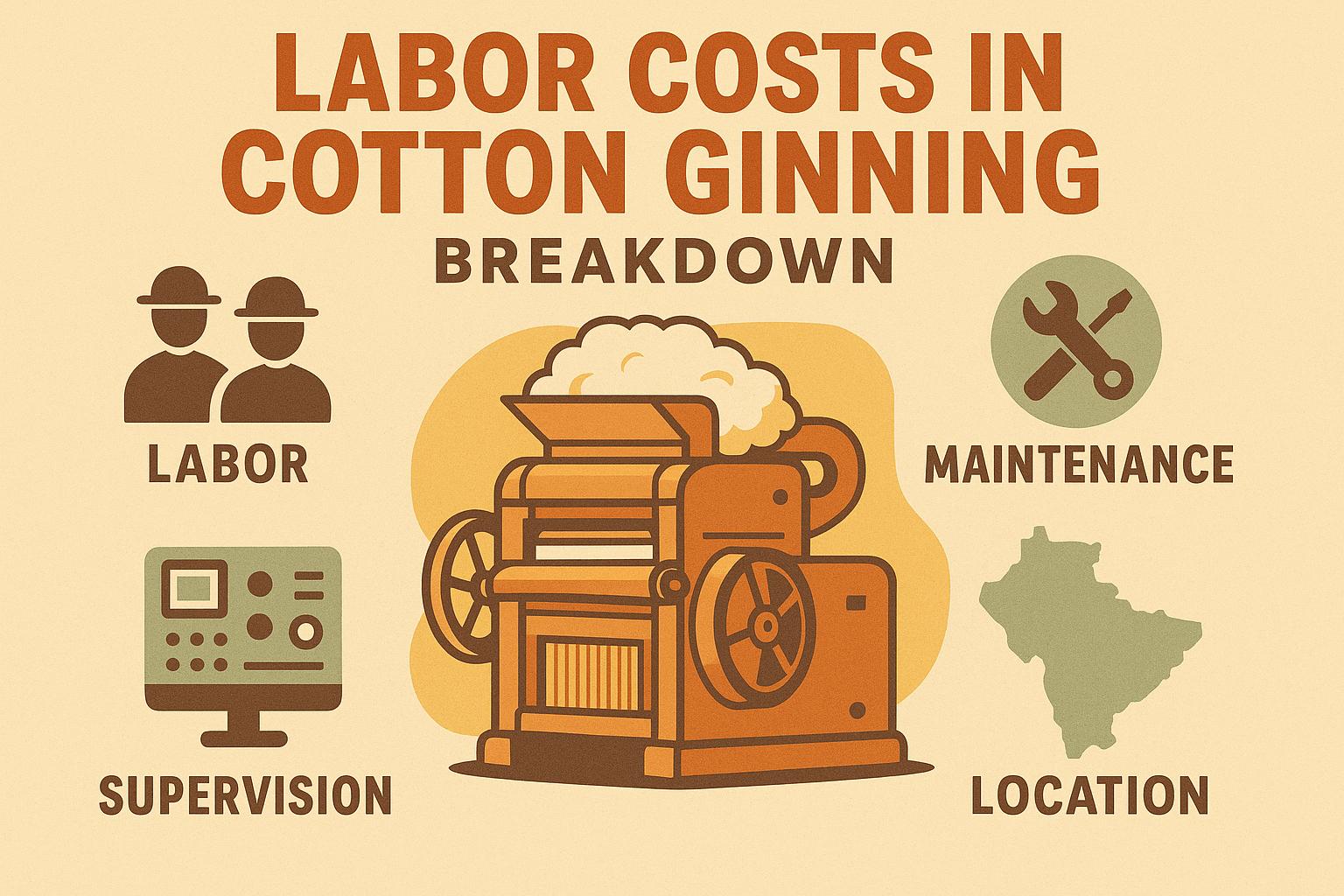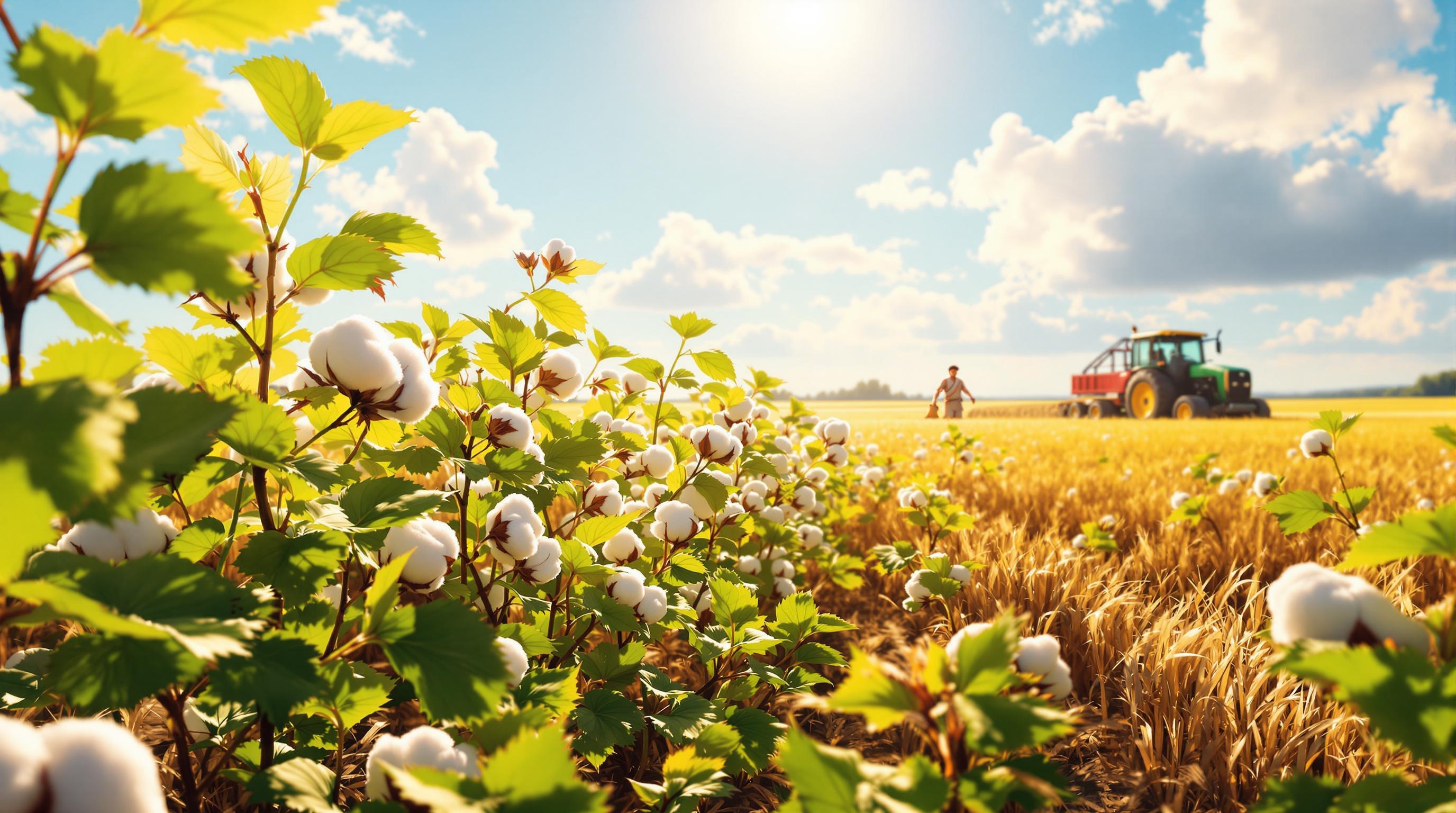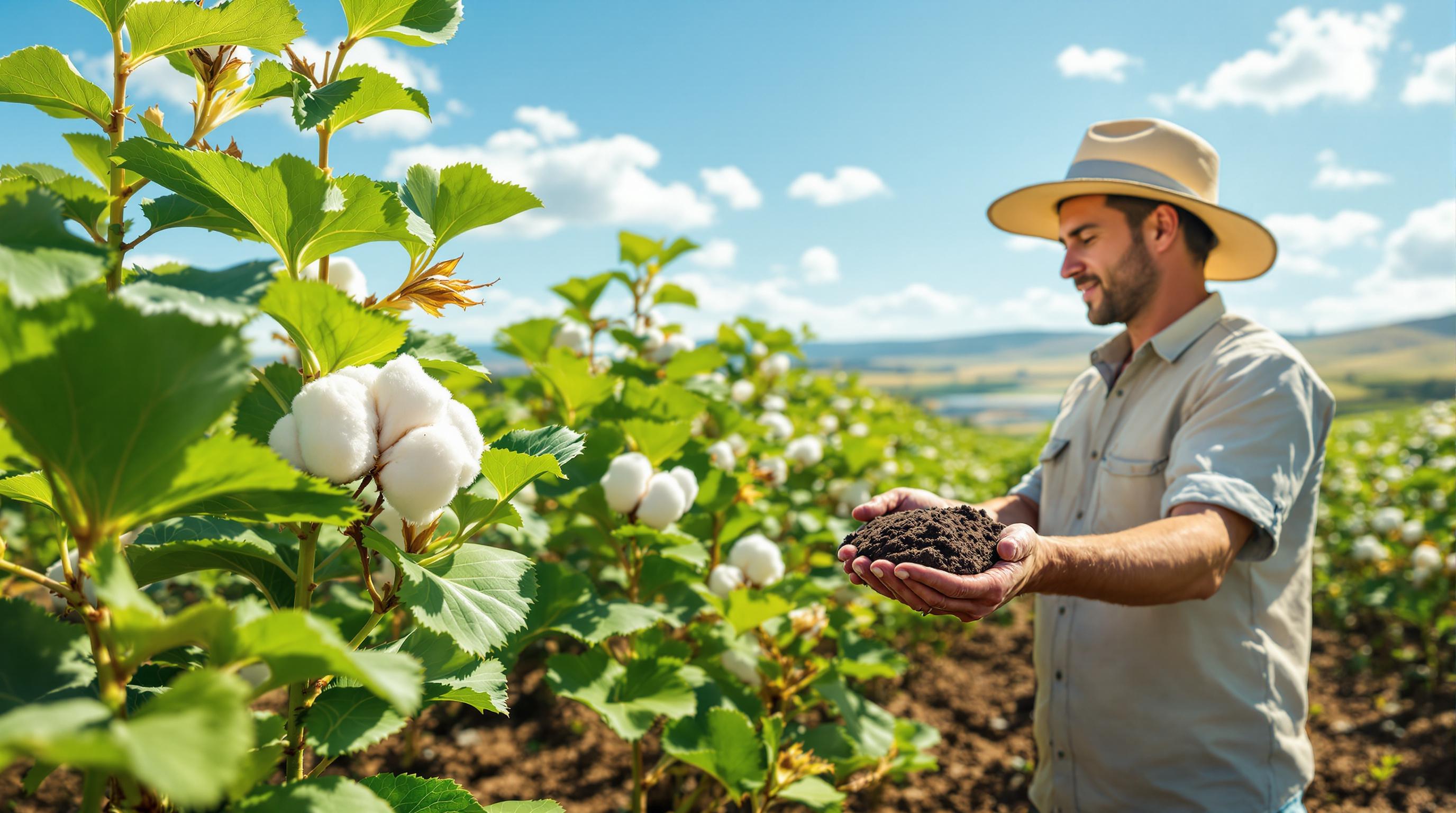- Polyethylene Film: Affordable, strong moisture barrier, but non-biodegradable.
- Woven Polypropylene Covers: Durable and reusable, but less moisture-resistant.
- Cotton-Based Bagging: Biodegradable and natural, but costly and less durable.
- Strapping Techniques: Adds stability, works with other methods, but offers limited protection on its own.
- Biodegradable Options: Eco-friendly and renewable, but higher upfront costs.
Quick Comparison
| Method | Durability | Moisture Resistance | Eco-Friendliness | Cost | Best For |
|---|---|---|---|---|---|
| Polyethylene Film | High | Excellent | Low | Medium | Long-distance transport |
| Woven Polypropylene | Medium-High | Moderate | Medium (reusable) | Medium | Semi-controlled storage |
| Cotton-Based Bagging | Moderate | Low | High (biodegradable) | High | Indoor storage, short transport |
| Strapping Techniques | Medium | N/A (used with others) | Medium (recyclable) | Low | Added stability for all methods |
| Biodegradable Packaging | Moderate | Good | Very High | High | Eco-regulated markets |
Choose the method that best fits your needs based on cost, durability, and environmental goals. Each option provides unique advantages depending on your priorities.
Cotton Bale Packing Process and Methods
1. Using Polyethylene Film
Polyethylene film, made from high-density polyethylene (HDPE), is a common choice for cotton bale packaging due to its strong protective features and affordability [1].
Protection and Durability
UV-stabilized polyethylene film, applied under tension using mechanical systems, provides solid protection during storage and transport. It acts as a barrier against moisture, dust, and pollutants, helping to maintain the cotton's quality throughout its journey [4].
Cost Benefits
Data indicates that using polyethylene film can lower wrapping costs by up to 40% compared to older methods [6]. Its lightweight yet sturdy design makes it a cost-effective option for U.S. cotton gin operators aiming to improve packaging efficiency.
Environmental Adjustments
With sustainability becoming a priority, manufacturers are making efforts to address environmental concerns. This includes reducing the film's thickness, cutting down on plastic use, and adopting energy-efficient production techniques [4]. These changes reflect the industry's shift toward more eco-friendly practices.
Modern automatic bale wrap systems have further simplified the process, making polyethylene film a practical choice for large-scale operations [4]. While it provides a balance of cost and protection, other packaging methods emphasize different priorities, which are discussed in the next sections.
2. Woven Polypropylene Covers
Woven polypropylene covers offer a practical mix of protection and affordability, while also addressing concerns about environmental responsibility. Made from tightly woven polypropylene fibers, these covers create a strong barrier to protect cotton bales during storage and transport.
Durability
These covers are known for their resistance to tears and damage [4]. While they lack the flexibility of polyethylene films, their rigid structure provides excellent puncture resistance. This makes them a solid choice for long-distance shipping and extended storage.
Contamination Risk
Woven polypropylene covers are effective at keeping external contaminants away, thanks to their dust-proof design that helps maintain the cleanliness of ginned cotton. However, they don't perform as well as polyethylene films in resisting moisture, which can be a drawback in humid environments [6][2].
Environmental Impact
Although they are not biodegradable, these covers have eco-friendly benefits due to their ability to be reused and recycled. Their long lifespan also means fewer replacements, which helps cut down on waste.
Cost-effectiveness
While the upfront cost is higher compared to polyethylene films, woven polypropylene covers save money over time. Their durability reduces the need for frequent replacements and minimizes losses caused by damage [6].
The Joint Cotton Industry Bale Packaging Committee (JCIBPC) endorses these covers as a dependable option for preserving cotton quality during storage and transport [1]. To maximize their effectiveness, it’s important to use proper securing methods and conduct regular inspections [2].
These covers focus on strength and reusability, but the next section looks at a natural, eco-conscious alternative.
3. Cotton-Based Bagging
Cotton-based bagging takes a step back to more natural packaging methods, using materials like jute and cotton fabric to protect ginned cotton bales. The Joint Cotton Industry Bale Packaging Committee (JCIBPC) has set clear guidelines for this approach, recognizing its specific uses and characteristics [1].
Durability and Protection
This type of bagging provides moderate durability, which depends heavily on the weave's density and overall quality. Although it’s not as tear-resistant as synthetic materials, it can still hold bale compression effectively when secured the right way [1][6]. However, because natural fibers absorb moisture easily, storing them indoors is crucial to avoid quality issues. Cotton-based bagging is also more vulnerable to dust, moisture, and physical damage, meaning proper storage and careful handling are key to maintaining its condition [1][2].
Environmental Impact and Cost Considerations
Cotton-based bagging is biodegradable, but its production has a larger environmental footprint compared to synthetic alternatives due to the high water and energy demands. Still, its biodegradable nature makes it attractive to markets focused on eco-friendly packaging.
From a cost perspective, it’s a mixed bag. The upfront expense is higher than polyethylene film options [1][6], but its natural traits and appeal to environmentally conscious markets make it a good fit for specific needs. The JCIBPC’s endorsement has also helped ensure consistent quality and performance standards across the industry [1].
To improve how cotton-based packaging performs, securing methods like strapping are essential. These will be discussed further in the next section.
sbb-itb-0e617ca
4. Strapping Techniques
Strapping techniques play a key role in keeping bales stable during storage and transport, often working alongside other packaging materials. The Joint Cotton Industry Bale Packaging Committee (JCIBPC) provides clear guidelines to ensure these methods meet industry standards [1].
Durability and Performance
Steel wires and straps - especially round and ovalized types - are known for their strength and dependability. The durability depends on the wire gauge and overall quality, helping maintain consistent bale compression during storage and shipping [1][2]. When applied correctly, these straps hold bales firmly in place, reducing the risk of shifting during transport.
Contamination Risk
Properly applied strapping helps protect bales from risks like oxygen exposure, combustion, or movement during handling. Regular inspections and choosing the right materials are critical to preserving the integrity of the bales [2]. Strapping also works well with other packaging methods, such as polyethylene film or woven covers, by holding everything securely together.
Environmental Impact
Although steel strapping isn’t biodegradable, it is recyclable, which helps lessen its environmental impact. Recycling programs allow steel straps to be reused, cutting down on waste [1]. Ensuring proper disposal also prevents issues like rust contamination.
Cost-effectiveness
Steel strapping might cost more upfront compared to options like polyethylene film [4][6]. However, its durability, ability to be recycled, and protection against damage make it a smart long-term choice. Regularly checking the straps for wear and tear ensures they perform as expected [2].
While strapping remains a reliable method for securing bales, the industry's shift toward sustainability has led to the development of biodegradable alternatives, which are explored in the next section.
5. Biodegradable Packaging Options
The push for greener solutions has made biodegradable packaging an appealing choice over synthetic materials. The Joint Cotton Industry Bale Packaging Committee (JCIBPC) has laid out clear guidelines for these materials [1].
Durability and Performance
Biodegradable materials, like bioplastics made from corn starch or sugarcane, are designed to be just as strong as traditional polyethylene films. This ensures they can handle the demands of transport and storage without compromising bale protection [4][6].
Contamination Risk
These materials offer solid defense against moisture and microbial growth, but they require careful handling. While they reduce the risk of chemical contamination compared to conventional packaging, additional safeguards might still be necessary for complete protection [1][2].
Environmental Impact
Biodegradable packaging helps cut down landfill waste and greenhouse gas emissions. Since it’s made from renewable resources and breaks down naturally without leaving harmful residues, it fits well with the industry's sustainability goals [4].
Cost-effectiveness
Although the upfront costs are higher than traditional options [4][6], biodegradable packaging can lead to savings in waste management and environmental compliance over time. For example, companies like Orient Plast have successfully used UV-stabilized biodegradable films to reduce material use per bale [6].
Biodegradable packaging is a step forward in balancing cost, performance, and eco-conscious practices, offering a practical way to protect bales while supporting sustainability goals.
Comparison of Packaging Methods
Choosing the right packaging method is a critical decision for cotton gin operators, as it affects both efficiency and competitiveness. Here's a breakdown of how different methods stack up across key factors:
| Packaging Method | Durability | Contamination Risk | Environmental Impact | Cost (Per Unit) | Best Suited For |
|---|---|---|---|---|---|
| Polyethylene Film | Strong and tear-resistant | Low - excellent moisture barrier | High - non-biodegradable | Medium ($360-400) | Long-distance transport and extended storage |
| Woven Polypropylene | Medium to high durability | Medium - good moisture resistance | Medium - partially recyclable | Medium | Short-term storage in semi-controlled environments |
| Cotton-Based Bagging | Moderate durability | Medium - breathable material | Low - biodegradable | High | Short-distance transport or indoor storage |
| Strapping Techniques | Low to medium | High - needs extra protection | Medium | Low | Short-term storage with additional safeguards |
| Biodegradable Options | Moderate | Medium to low | Minimal - renewable and decomposable | High | Areas with strict environmental regulations |
Key Insights
-
Cost Savings with Polyethylene Film
Polyethylene film can cut wrapping expenses by up to 40%, compared to traditional woven polypropylene or fabric covers [6]. However, this comes with a trade-off: it’s non-biodegradable, making it less eco-friendly. -
Moisture Protection and Strapping Risks
Proper strapping is essential to avoid increased combustion risks during storage or transport [2]. Materials offering superior moisture protection are especially important in climates with high humidity or unpredictable weather [1][2]. -
Biodegradable Packaging Advantages
While biodegradable options come with higher upfront costs, they provide comparable strength to conventional materials and significantly reduce environmental harm [4][6].
Factors to Consider
When selecting a packaging method, operators should weigh:
- Durability and Cost: Polyethylene film is a solid choice for long-term storage and lengthy shipping routes due to its strength and affordability.
- Climate Needs: Moisture resistance becomes critical in humid or variable climates.
- Regulatory Requirements: Certain regions may mandate environmentally friendly packaging solutions.
Ultimately, the right choice depends on balancing operational needs with cost and sustainability goals. Each method has its strengths, so tailoring the selection to specific scenarios is key.
Final Thoughts
Choosing the right cotton bale packaging method is a key decision that affects both how efficiently operations run and how environmentally responsible they are. The Joint Cotton Industry Bale Packaging Committee (JCIBPC) guidelines offer a reliable starting point for making decisions that meet industry expectations [1].
Packaging methods are evolving, with new options tackling various challenges. For instance, polyethylene film is a cost-effective choice [6], but growing awareness of environmental issues has driven the use of biodegradable materials, especially in areas with strict regulations [4].
When weighing packaging options, it’s important to focus on a few critical factors:
- Material Performance: HDPE films are strong and resist tearing, making them great for long-distance shipping and extended storage needs [4][5].
- Environmental Impact: Biodegradable materials now compete with traditional options in strength while reducing harm to the environment [3].
- Cost-Effectiveness: Look at both the upfront costs and how the choice affects long-term savings.
For cotton gin operators, platforms like cottongins.org can connect them with local suppliers and solutions tailored to their specific needs. These resources make it easier to find packaging that fits individual requirements.
The future of cotton bale packaging will depend on balancing durability, cost, and environmental concerns. Staying updated on new materials and techniques will help operators meet changing demands while maintaining efficiency and responsibility. Advances in this area will continue to shape how cotton bales are protected and transported in the years to come.


